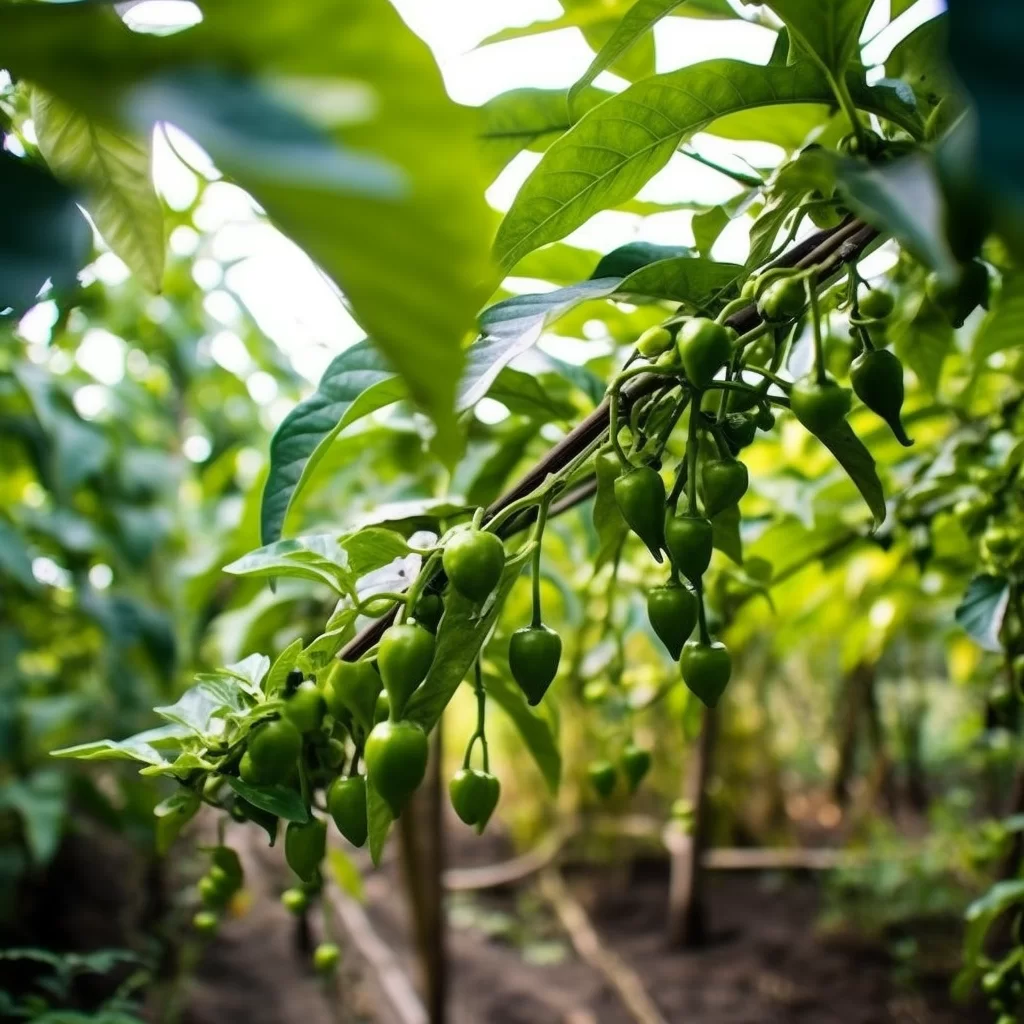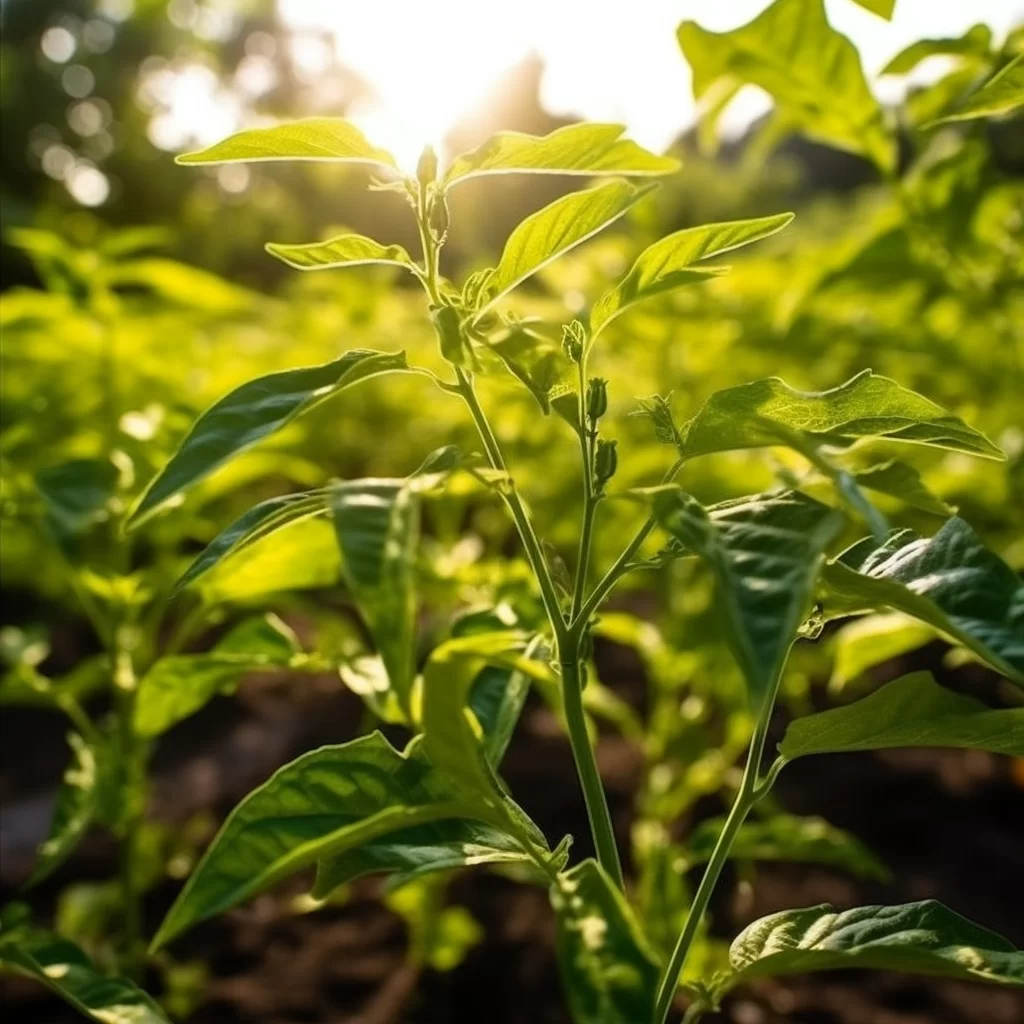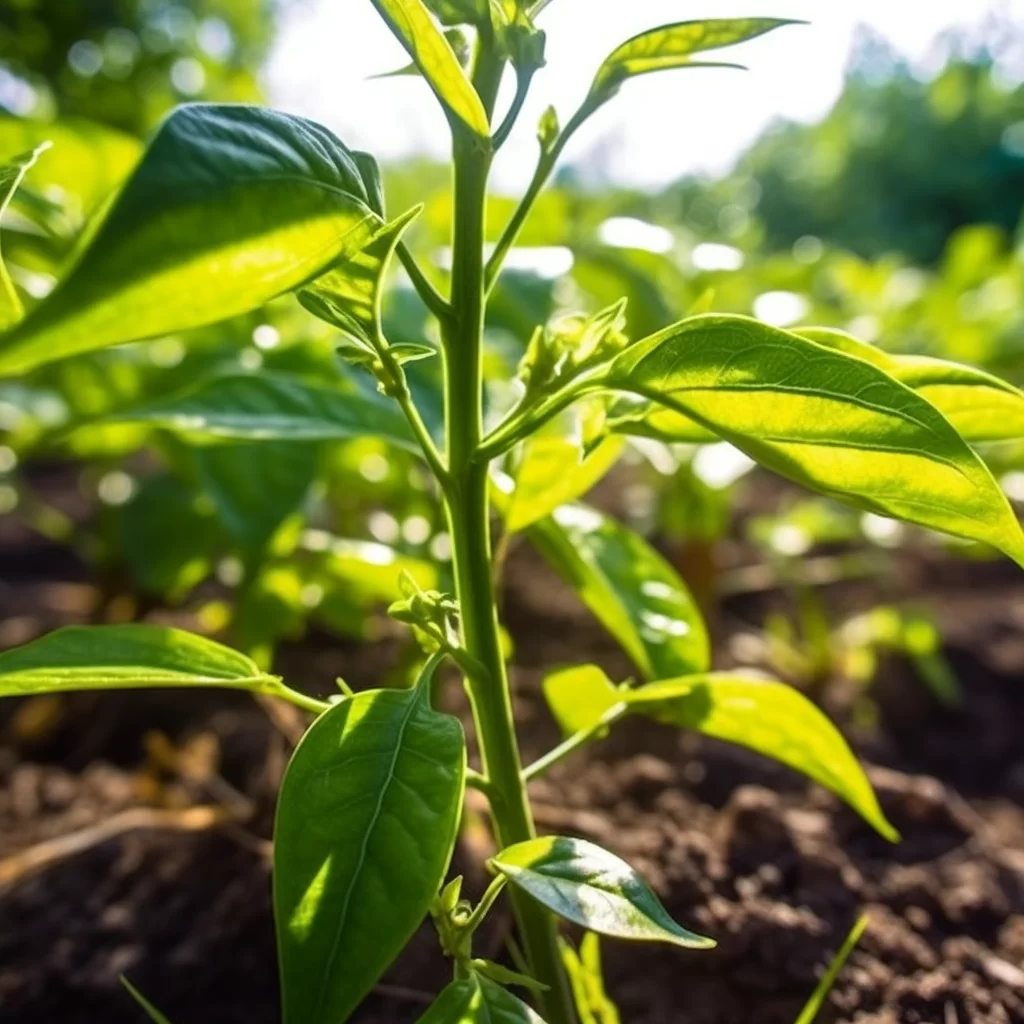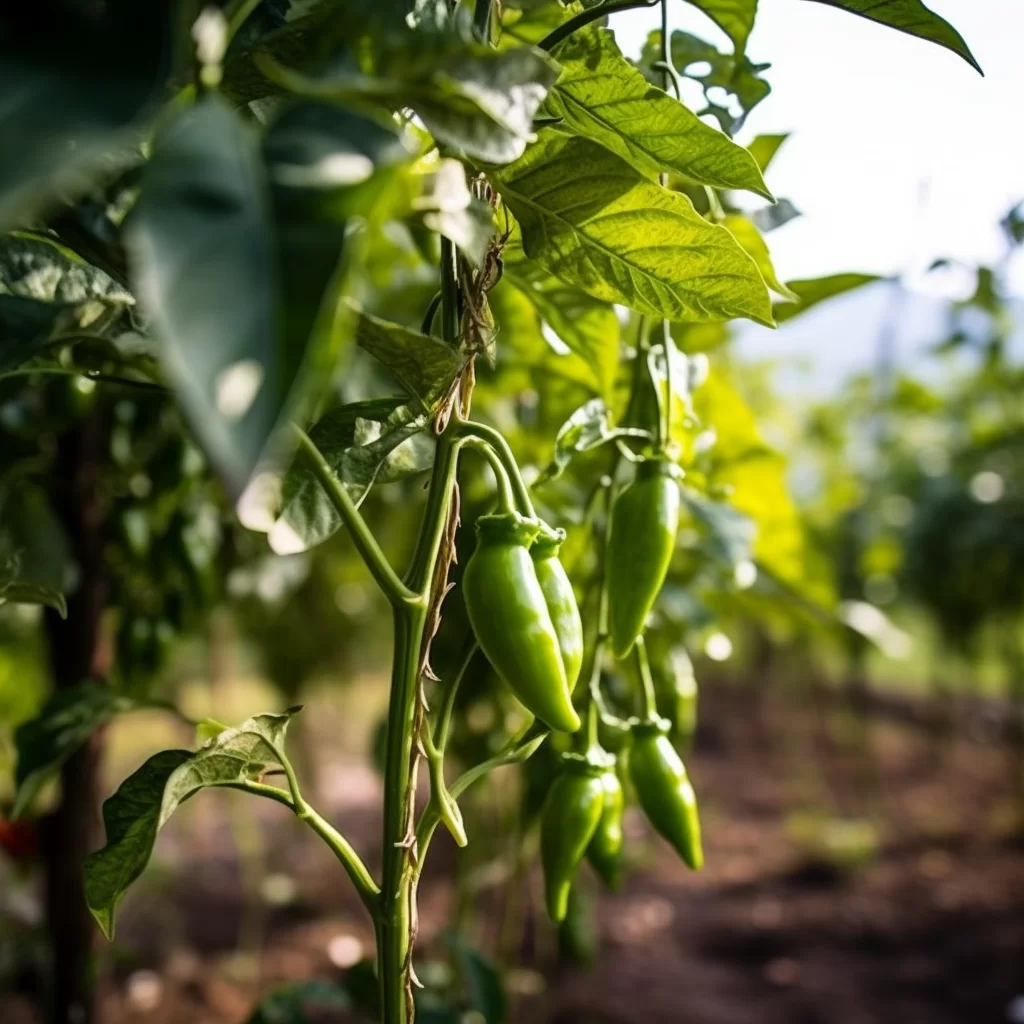Story of Day :
Contents
The Poblano Pepper Plant: A Complete Guide and Care Tips
Introduction
If you’re a foodie who loves Mexican cuisine, then you simply can’t ignore the delicious poblano peppers.
These flavorful yet mildly spicy peppers are a vital ingredient in many classic Mexican dishes such as chiles rellenos, mole sauce, and salsa.
However, did you know that it’s also possible to grow them in your garden with ease? This handy guide has all the information you need to get started on growing your own poblano pepper plants!Not only do these versatile peppers add an authentic flavor to any dish, but they’re also incredibly easy to care for and grow yourself.
From selecting the right soil and location for planting to properly watering and fertilizing them throughout their growth cycle – this guide will provide all the tips necessary for successful cultivation of this beloved pepper variety.
So why not give it a go? With just a little bit of effort and patience, soon enough, you’ll be enjoying homegrown poblano peppers straight from your backyard!
What is a Poblano Pepper Plant?
 The Poblano pepper is a variety of chili pepper that can be traced back to the state of Puebla in Mexico.
The Poblano pepper is a variety of chili pepper that can be traced back to the state of Puebla in Mexico.
It has a unique taste and heat level, which makes it stand out from other peppers.
With a mild to medium range (1000-2000 Scoville units), it is not too hot nor too bland for anyone’s palate.
This makes it an excellent ingredient for various dishes, especially those that require just the right amount of heat without overpowering flavors.In addition to its pleasant heat level, the Poblano pepper also boasts an earthy flavor with hints of berry-like sweetness.
These flavors make it an ideal choice for dishes such as stuffed peppers or chili relleno.
The versatility and rich taste profile of this pepper have made it popular in many cuisines worldwide, where chefs use it as a staple ingredient in different recipes ranging from salsas to soups and stews.
If you are looking for a flavorful yet mildly spicy addition to your meals, then the Poblano pepper should be on top of your list!Poblano pepper plants might not be the biggest chili variety out there, but they definitely have a lot to offer.
With a maximum height of three feet, these plants are rather compact and perfect for small gardens or containers.
They feature beautiful dark green leaves that complement their white flowers perfectly.
Once the flowering phase is over, the plant will start producing delicious fruits that can take your culinary game to new heights.The peppers themselves are truly impressive and quite unique in terms of shape and size.
They usually grow up to five or six inches long with a width of two-and-a-half inches at their widest point.
This makes them easy to handle and perfect for stuffing or grilling.
Poblanos have an unmistakable smoky flavor, with just enough heat to give your taste buds a little kick without overwhelming them.
Whether you’re into Mexican cuisine or just looking for something different to spice up your dishes, poblano peppers are definitely worth trying out!
How to Grow Poblano Pepper Plants
If you are looking for an easy way to grow poblano pepper plants, then look no further.
Following some simple steps can make the process hassle-free and enjoyable.
First, ensure that the soil in which you plant your seeds is well-drained and rich in organic nutrients to support growth.
You can also add compost or manure to improve soil fertility.It’s important to give your plants enough water but be careful not to overwater as this may lead to root rot or fungal infections.
Poblano peppers thrive best in warm temperatures, so make sure they get plenty of sunlight during the day.
You can also use a fertilizer with high phosphorus content during flowering and fruiting stages for a bountiful harvest.
By following these basic steps, growing poblano peppers will be easy-peasy!
- Pick the Right Spot: Choose an area in your garden that receives full sunlight for six hours or more every day.
Ensure the soil is well-draining as poblanos don’t like wet feet.
- Prepare the Soil: Use compost or organic matter mixed into your soil before planting.
- Sow Your Seeds: You can start poblanos indoors six weeks prior before transplanting them into your garden when danger of frost has passed.
Alternatively, you can directly sow your seeds into the soil after the frost has passed.
- Watering: Poblanos require moderate watering.
Keep the soil evenly moist but not waterlogged, as this may cause root rot.
- Fertilizing: Use a balanced fertilizer every two to three weeks to keep your plants healthy and producing fruit throughout the growing season.
- Staking: As poblanos grow taller and start producing fruit, they may need support from stakes or cages to keep them upright and prevent breakage during heavy winds or rain.

Pests and Diseases
If you have poblanos in your garden, there are a few things you should keep an eye out for.
Like any other plant, poblanos can fall prey to pests and diseases that can damage or even kill the plant.
While these issues aren’t particularly unique to this type of pepper, it’s still important to be aware of them so that you can take the necessary steps to prevent or treat them.Some common problems you might encounter with your poblanos include insect infestations (such as aphids), fungal infections (like powdery mildew), and bacterial diseases.
Fortunately, there are a variety of ways to combat each of these issues depending on the severity and type of problem at hand.
Regularly inspecting your plants for signs of distress is key in catching any potential issues early on before they have a chance to take hold and spread throughout your garden.
- Aphids: These small insects feed on plant sap causing yellowing of leaves.
Use insecticidal soap spray or neem oil as an effective solution.
- Cutworms: These larvae cut through young plants at ground level causing significant damage early on in growth.
Place collars around stems of young plants for protection against cutworms
- Blossom End Rot: This is a common disease that affects peppers caused by calcium deficiency; it causes dark splotches at one end of fruits making them inedible .
Ensure proper watering consistently as inconsistent watering leads contribute towards blossom end rot disease
.
 If you’re looking for a mild pepper with a smoky flavor, then the Poblano pepper might be the perfect choice for you! These peppers are usually harvested when they reach a dark green color and are about three to six inches long.
If you’re looking for a mild pepper with a smoky flavor, then the Poblano pepper might be the perfect choice for you! These peppers are usually harvested when they reach a dark green color and are about three to six inches long.
But don’t worry if you can’t find them fresh in your local grocery store, as they’re often available canned or dried too.
When selecting fresh Poblano peppers, choose ones that are firm, glossy, and have no signs of wilting or blemishes.
The larger the pepper is, the more mature it is likely to be and therefore may have more heat.When cooking with Poblano peppers, there are many different ways to prepare them depending on your taste preference.
You can roast them over an open flame until their skin blisters and blackens or stuff them with cheese or meat for a delicious filling meal.
If you’re not sure what to do with your Poblanos yet but want to keep them fresh until inspiration strikes – simply store them in the refrigerator in an air-tight container for up to one week.
So next time you’re at the grocery store or farmer’s market – keep an eye out for these versatile and flavorful peppers!Poblanos are a type of chili pepper that usually take about 70-75 days from transplanting to fully mature into edible fruits with deep green skin.
If left on the plant longer, they turn red and develop a slightly sweeter flavor.
When it’s time to harvest these tasty peppers, it’s best to use a sharp knife or scissors to cut just above the stem.
This will help prevent damage and ensure that your poblanos stay fresh.If you find yourself with more poblanos than you can use at once, don’t worry! These peppers can be stored in the refrigerator for up to two weeks if wrapped in paper towels.
This will help absorb any excess moisture and keep them from spoiling too quickly.
So whether you’re using poblanos in your favorite recipes or storing them for later use, these delicious peppers are definitely worth getting excited about!
Conclusion
For garden enthusiasts, growing poblano peppers can be a joyous and fulfilling activity.
The process is relatively easy as long as the plants are given proper care.
A sunny spot that receives adequate sunlight, well-draining soil, moderate watering and fertilization are all essential components of successful pepper cultivation.
With careful monitoring of pests and diseases, one can cultivate healthy plants that will yield a bountiful harvest throughout the season.Growing your own poblano peppers has several advantages over purchasing them from a store.
Not only do you get to enjoy fresh produce straight from your garden without harmful pesticides or preservatives but you also get to experiment with different recipes using this versatile ingredient.
Whether it’s in salsas, stews or stuffed with cheese and baked; the possibilities are endless! So why not add some spice to your gardening experience by planting some poblano pepper seeds today?